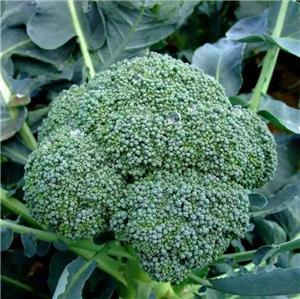-
0206-2022
20 Foods That Are High in Vitamin C
Vitamin C is a water-soluble vitamin that’s found in many foods, particularly fruits and vegetables. It functions as a powerful antioxidant in the body and plays important roles in immune function, neurotransmitter production, collagen synthesis, and more. Getting enough vitamin C in your diet may help reduce the risk of common health conditions like heart disease. Additionally, Vitamin C is vital for collagen synthesis, connective tissue, bones, teeth, and your small blood vessels. The current daily value (DV) for vitamin C is 90 mg. Deficiency symptoms include higher susceptibility to infections, bleeding gums, frequent bruising and infections, poor wound healing, anemia, and scurvy
-
0608-2021
L-Carnitine: Benefits, Side Effects, Sources and Dosage
L-carnitine is a naturally occurring amino acid derivative that’s often taken as a supplement. It is used for weight loss and may have an impact on brain function. However, popular claims about supplements don’t always match up with the science. This article examines the potential risks and benefits of L-carnitine supplements and explains how this nutrient functions in your body.
-
0507-2021
Fourth meeting of the WHO Nutrition Guidance Expert Advisory Group (NUGAG) Subgroup on Policy Actions
In response to a call from the 58th World Health Assembly (May 2005), the WorldHealth Organization (WHO) established the Guidelines Review Committee (GRC) in 2007 with the purpose of developing and implementing procedures to ensure that WHO guidelines are developed in ways consistent with internationally recognized best practices, emphasizing the appropriate use of systematically reviewed available evidence. The robust guideline development process being implemented by WHO is overseen by the Guideline Review Committee (GRC) and is described in detail in the WHO Handbook for guideline development (2014).
-
0706-2021
7 Proven Health Benefits of Ginseng
Ginseng has been used in traditional Chinese medicine for centuries. This slow-growing, short plant with fleshy roots can be classified three ways, depending on how long it is grown: fresh, white or red. Fresh ginseng is harvested before 4 years, while white ginseng is harvested between 4–6 years and red ginseng is harvested after 6 or more years. There are many types of this herb, but the most popular are American ginseng (Panax quinquefolius) and Asian ginseng (Panax ginseng). American and Asian ginseng vary in their concentration of active compounds and effects on the body. It is believed that American ginseng works as a relaxing agent, whereas the Asian variety has an invigorating effect (1Trusted Source, 2Trusted Source). Ginseng contains two significant compounds: ginsenosides and gintonin. These compounds complement one another to provide health benefits (3Trusted Source). Here are 7 evidence-based health benefits of ginseng.
-
3004-2021
9 Benefits of Coenzyme Q10 (CoQ10)
Coenzyme Q10, also known as CoQ10, is a compound that helps generate energy in your cells. Your body produces CoQ10 naturally, but its production tends to decrease with age. Fortunately, you can also get CoQ10 through supplements or foods. Health conditions like heart disease, brain disorders, diabetes, and cancer have been linked to low levels of CoQ10 (1Trusted Source). It is not clear whether low levels of CoQ10 cause these diseases or are a result of them. One thing is for certain: plenty of research has revealed CoQ10’s wide range of health benefits. Here is all you need to know about CoQ10.
-
1203-2021
Third meeting of the WHO Nutrition Guidance Expert Advisory Group (NUGAG) Subgroup on Policy Actions
The WHO Department of Nutrition and Food Safety (NFS), through the work of the Nutrition Guidance Expert Advisory Group (NUGAG) Subgroup on Policy Actions, is providing evidence-informed WHO guidance on effective policy measures to support Member States in developing enabling food environment to promote healthy diets and nutrition. Priority policy measures include nutrition labelling policies, policies to restrict marketing to children, fiscal and pricing policies, and school food and nutrition policies.
-
1309-2021
How vaccines can help to prevent antibiotic resistance - Zimbabwe’s response to drug-resistant outbreaks of typhoid and cholera
Antibiotic resistance is a natural phenomenon that happens when bacteria develop the ability to defeat the drugs designed to kill them. The germs change over time, no longer responding to medicines thus making infections harder, and sometimes impossible, to treat. This, in turn, results in higher health care costs for both individuals and governments. “Preventing and controlling antibiotic resistance calls for a multi-pronged approach, of which vaccines is one”, says Dr Stanley Midzi, WHO Health Systems Strengthening Advisor.
-
1009-2021
Upcoming WHO Consultation on the Composition of Influenza Virus Vaccines for the Southern Hemisphere 2022
We wish to inform you that the WHO Consultation on the Composition of Influenza Virus Vaccines for Use in the 2022 Southern Hemisphere Influenza Season will take place virtually from 13-23 September 2021, followed by an Information Meeting on the 24 September 2021, with vaccine manufacturers and national vaccine regulatory agencies. More information is available on the website here. The WHO recommendation will be based on the analysis of recent influenza viruses worldwide.
-
0809-2021
New World Food Safety Day Report highlights a year-round effort to promote and ensure safe food for all
On 7 September 2021 WHO and FAO jointly released the annual World Food Safety Day report highlighting around 300 different events organized around the world on the occasion of World Food Safety Day (7 June 2021). Celebrations were held in 90 countries by international organizations, governments, businesses, non-governmental organizations, academics and individuals.
-
0209-2021
WHO releases new compendium of innovative health technologies for COVID-19 and other priority diseases
The COVID-19 pandemic has highlighted the need for innovative health technologies that can help countries improve health outcomes by providing shortcuts to solutions despite lack of infrastructure and resources. However, many of the new technologies that have come to market are unaffordable or unsuitable for low- and middle-income countries.




